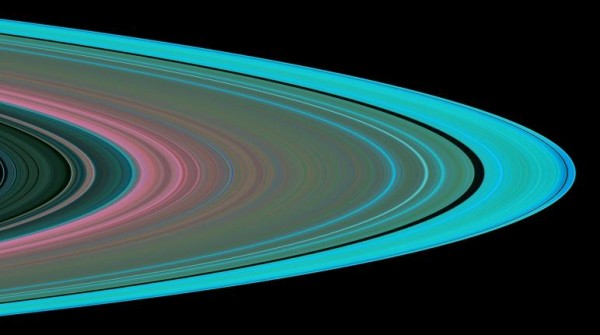By Ana Verayo, | November 25, 2016

The specially-designed Cassini orbits places Earth and Cassini on opposite sides of Saturn's rings, a geometry known as occultation. (NASA/JPL)
It's already the final stages of NASA's Saturn Cassini probe mission, however, before it ends, the space probe will plunge into the gas giant's majestic rings, grazing each major one, as the probe completes its mission.
Like Us on Facebook
When Cassini investigates these massive rings, the probe will be able to capture new imagery to explore more of the moons located within this region. While orbiting these ring, the spacecraft will be at the closest point ever to Saturn. Cassini will obtain imagery of Saturn's moons; Pan, Atlas, Daphnis, and Pandora.
According to Cassini project scientist, Linda Spilker of NASA's Jet Propulsion Laboratory, this phase of the mission will be known as Cassini's Ring-Grazing Orbits since the probe will be skimming through the outer edges of these rings. Cassini's onboard suite of scientific instruments will also take samples and analyze particles and gasses in this ring plane.
Saturn's main rings include Ring A, Ring B, and Ring F. The first two rings are the first ones to be detected as Cassini will gather new data from these major rings. These new Cassini orbits will provide more detailed imagery and data compared to the first Saturn mission back in 2004.
These new images of Saturn's rings will be at 0.6 miles or one kilometer per pixel, which will be the highest resolution yet of Saturn's massive ring system.
More specifically, this stage of the mission will hopefully capture images of Saturn's moonlets hidden within the A ring. These moonlets are so small that they remain unseen despite multiple orbits around the region.
At 56,000 miles above the surface of Saturn, Cassini will complete these new orbits. NASA mission scientists have revealed that the spacecraft will enter its grand finale stage in April next year, flying over the gas giant at unprecedented proximity.
-
Use of Coronavirus Pandemic Drones Raises Privacy Concerns: Drones Spread Fear, Local Officials Say

-
Coronavirus Hampers The Delivery Of Lockheed Martin F-35 Stealth Fighters For 2020

-
Instagram Speeds Up Plans to Add Account Memorialization Feature Due to COVID-19 Deaths

-
NASA: Perseverance Plans to Bring 'Mars Rock' to Earth in 2031

-
600 Dead And 3,000 In The Hospital as Iranians Believed Drinking High-Concentrations of Alcohol Can Cure The Coronavirus

-
600 Dead And 3,000 In The Hospital as Iranians Believed Drinking High-Concentrations of Alcohol Can Cure The Coronavirus

-
COVID-19: Doctors, Nurses Use Virtual Reality to Learn New Skills in Treating Coronavirus Patients







